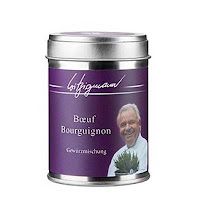Dr. Schirmer is one of the few people still alive who actually flew on the Hindenburg - but not during its fateful crash in 1937.
The aeronautical engineer wanted to show his son how lighter-than-air hydrogen made the 15-story tall dirigible he had helped design float, as if it was weightless. "You can lift this ship up," Max Schirmer said, putting the boy's hand on the bottom of the control car. "Push."
"So I lifted the ship," Horst Schirmer recalled. ...
LZ 129 Hindenburg (Luftschiff Zeppelin #129; Registration: D-LZ 129) was a large German commercial passenger-carrying rigid airship, the lead ship of the Hindenburg class, the longest class of flying machine and the largest airship by envelope volume. It was designed and built by the Zeppelin Company (Luftschiffbau Zeppelin GmbH) on the shores of Lake Constance in Friedrichshafen and was operated by the German Zeppelin Airline Company (Deutsche Zeppelin-Reederei). The airship flew from March 1936 until destroyed by fire 14 months later on May 6, 1937, at the end of the first North American transatlantic journey of its second season of service. Thirty-six people died in the accident, which occurred while landing at Lakehurst Naval Air Station in Manchester Township, New Jersey, United States.
Hindenburg was named after the late Field Marshal Paul von Hindenburg (1847–1934), President of Germany (1925–1934).
The 1936 transatlantic season
The Hindenburg made 17 round trips across the Atlantic Ocean in 1936, its first and only full year of service, with ten trips to the United States and seven to Brazil. In July 1936, the airship also completed a record Atlantic double crossing in five days, 19 hours and 51 minutes. Among the famous passengers who travelled on the airship was German heavyweight boxing champion Max Schmeling, who returned home on the Hindenburg to a hero's welcome after knocking out Joe Louis in New York on June 19, 1936. During the 1936 season the airship flew 191,583 miles (308,323 km), carried 2,798 passengers, and transported 160 tons of freight and mail, a level of success that encouraged the Luftschiffbau Zeppelin Company to plan the expansion of its airship fleet and transatlantic services.During 1936 the Hindenburg had a special Blüthner aluminium grand piano placed on board in the music salon, although the instrument was removed after the first year to save weight. Over the winter of 1936–37, several alterations were made to the airship's structures. The greater lift capacity allowed ten passenger cabins to be added, nine with two beds and one with four beds, thus increasing the total passenger capacity to 72. In addition, "gutters" were installed to collect rain for use as water ballast: taking on rainwater ballast to compensate for the weight of fuel consumed during a voyage was more economical than venting hydrogen.
Another change was the installation of an experimental aircraft hook-on trapeze based on the system similar to the one used on the U.S. Navy Goodyear-Zeppelin built airships Akron and Macon. This was intended to allow customs officials to be flown out to the Hindenburg to process passengers before landing and to retrieve mail from the ship for early delivery. Experimental hook-ons and takeoffs were attempted on March 11 and April 27, 1937, but were not very successful, owing to turbulence around the area where the hook-up trapeze had been mounted. The loss of the ship ended all prospects of further testing.
The final flight: May 3–6, 1937
After making the first South American flight of the 1937 season in late March, Hindenburg left Frankfurt for Lakehurst on the evening of May 3, on its first scheduled round trip between Europe and North America that season. Although strong headwinds slowed the crossing, the flight had otherwise proceeded routinely as it approached for a landing three days later.
The Hindenburg's arrival on May 6 was delayed for several hours to avoid a line of thunderstorms passing over Lakehurst, but around 7:00 pm the airship was cleared for its final approach to the Naval Air Station, which it made at an altitude of 650 ft (200 m) with Captain Max Pruss at the helm. Four minutes after ground handlers grabbed hold of a pair of landing lines dropped from the nose of the ship at 7:21 pm, the Hindenburg suddenly burst into flames and dropped to the ground in just 37 seconds. Of the 36 passengers and 61 crew on board, 13 passengers and 22 crew died, as well as one member of the ground crew, making a total of 36 lives lost in the disaster.
The exact location of the initial fire, its source of ignition, and the initial source of fuel remain subjects of debate. The cause of the accident has never been determined conclusively, although many hypotheses have been proposed. Escaping hydrogen gas will burn after mixing with air and will explode when mixed with air in the right proportions. The covering also contained material (such as cellulose nitrate and aluminium flakes) which Addison Bain and other experts claim are highly flammable when combined in the right proportions. This theory is highly controversial and has been rejected by other researchers because the outer skin burns too slowly to account for the rapid flame propagation and hydrogen fires had previously destroyed many other airships. The duralumin framework of Hindenburg was salvaged and shipped back to Germany. There the scrap was recycled and used in the construction of military aircraft for the Luftwaffe, as were the frames of Graf Zeppelin and Graf Zeppelin II when they were scrapped in 1940.








